7 Garden Bee Species You Want to See in Your Yard
Updated: Mar. 12, 2024
There are over 4,000 native bees and many are in decline. Here are 7 beneficial garden bee species that need a boost from helpful gardeners.
Garden Bee Species You Should Know
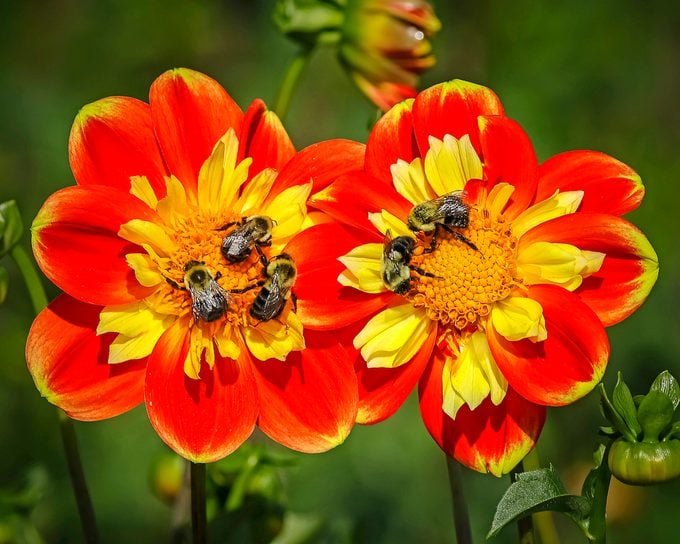
Garden bees are tremendously important pollinators of plants, commercial crops, and native vegetation. There are over 4,000 native North American garden bee species, in addition to the European honeybee, and many are in decline. Most native bees are solitary, individually nesting in tunnels rather than forming hives and making honey. There are some easy ways you can help the bees.
To create a bee-friendly backyard, plant wildflowers, blooming trees and shrubs for a steady supply of nectar and pollen from early spring to fall. Fill a bird bath with gravel to give bees a place to drink without drowning, and another filled with mud for nesting material. Provide fallen logs, tree snags, dead plant stems and open patches of sandy soil for nesting. Plus, you can build or buy bee houses made of replaceable nesting tubes. Once you’ve got these few basics down and bees are visiting your yard, watch for some of these garden bee species.
These bee photos are un-bee-lievably cute!
1. Squash Bees
These fuzzy, solitary ground nesters gather nectar and pollen exclusively from squash, pumpkins and gourds, pollinating the flowers so the plants can produce bounty for you.
Check out the best flowers that attract bees.
2. Mason Bees
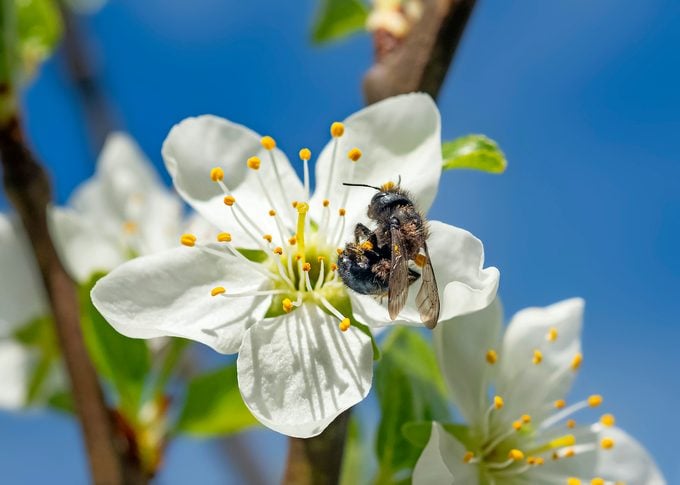
There are about 140 mason bee species in North America. Some have dull black and yellow striping, while others are blue-black or green. They are solitary nesters, laying eggs in a series of mud-walled chambers in decaying wood. The blue orchard mason bee is an efficient pollinator of fruit trees.
3. Blueberry Bees
Blueberry bees are a stocky, solitary species and look similar to bumblebees. They vibrate their wings at a blossom to shake the pollen out of it, a technique called “buzz pollination.” They are important pollinators of blueberries in the South.
Check out gifts for bee lovers that are worth buzzing about.
4. Alkali Bees
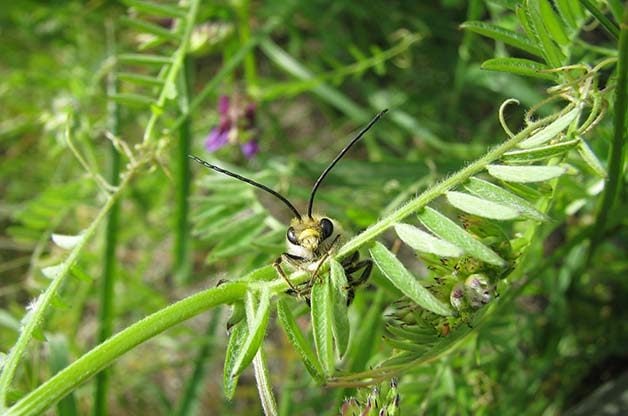
Crucial to the pollination of alfalfa, these boldly striped bees are found in the west and nest in tunnels in the ground. Though they don’t form hives, females build their elaborate nesting tunnels in close proximity to each other, forming colonies.
Learn 6 key differences between bees and wasps.
5. Bumblebees
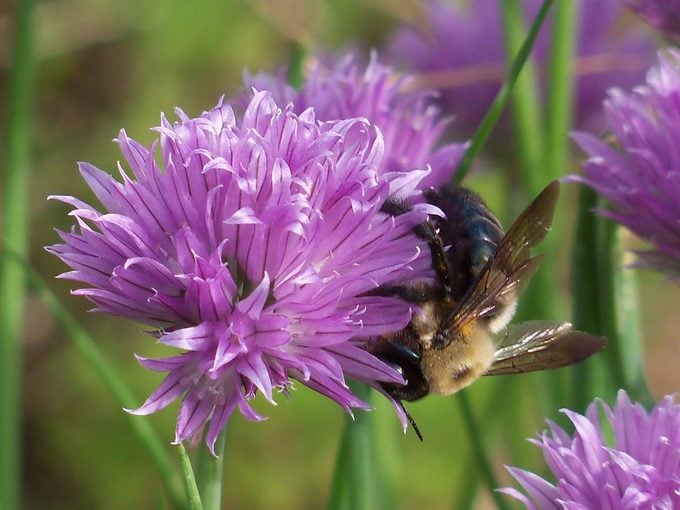
Like honeybees, bumblebees form hives. There are 46 species in North America, and most nest in holes in the ground, under fallen logs or in old rodent burrows. In the spring, the queen emerges from hibernation and looks for a suitable place to build her hive. She mated at the end of the previous summer and is ready to lay her first eggs, which hatch into female worker bees that collect nectar and pollen, make honey and maintain the hive. Bumblebees pollinate native flowers and several edibles, such as tomatoes, peppers and strawberries. One of the most entertaining garden bugs, it’s a rather clumsy flier and stays on flowers long enough for you to take a picture. It is capable of stinging, but will only do so if it thinks you plan to harm it.
Here’s what every beginning beekeeper needs to know.
6. Virescent Green Metallic Bee
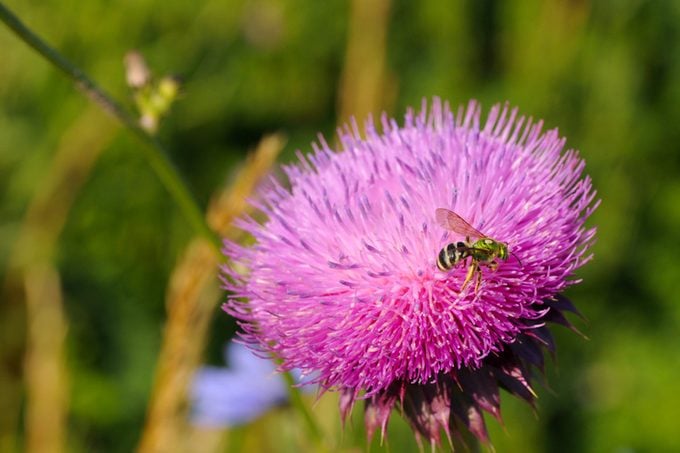
You’ll see this bee in most gardens. A shiny green metallic head and thorax and banded abdomen clearly make it stand out from other bees and wasps. Often called a sweat bee, this pollinator makes its nest in the ground.
Meet 8 beneficial insects you want to see in your garden.
7. Honeybee
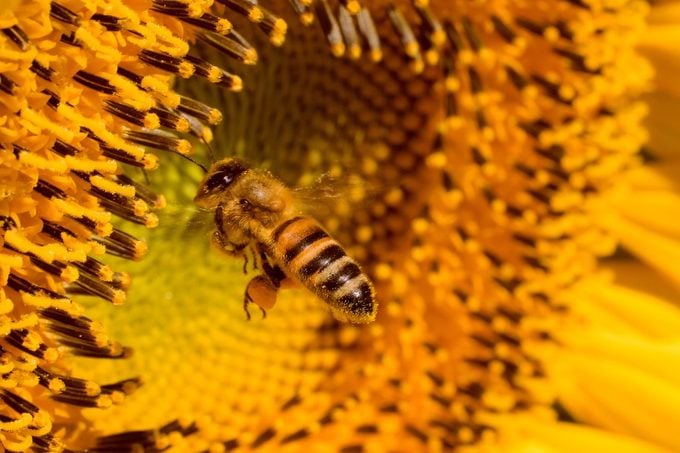
Besides being the producers of the honey that we eat, honeybees serve as major pollinators of flowers and crops. Though not native to the U.S., they are some of the most important good bugs for your garden. They’re known as social insects because they live in large colonies. Although they’re capable of stinging, they will do so only when they feel threatened.
Bees or flies? Learn how to identify common garden bugs.
Plants to Grow for Garden Bees
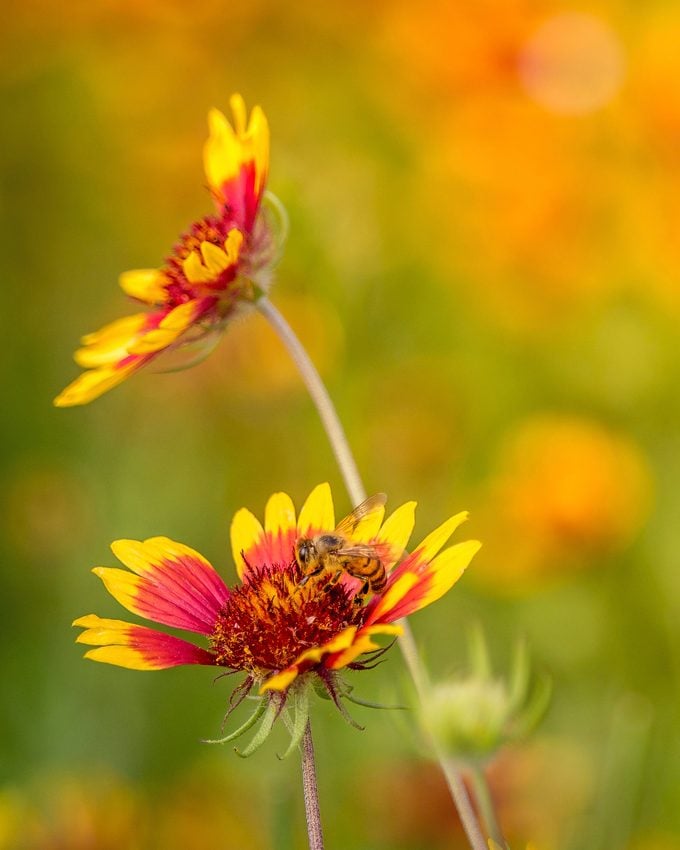
Create an ideal garden bee habitat with nectar and pollen plants.
- Milkweed
- Mountain mint
- Anise hyssop
- Sedum
- Lavender
- Blanket flower
- Bee balm
- Coneflower
- Sunflower
- Aster
- Blueberry
- Elderberry
- Serviceberry
- Apple, pear and other fruit trees
Next, find out why we love beeswax wrap, a natural alternative to plastic wrap.
